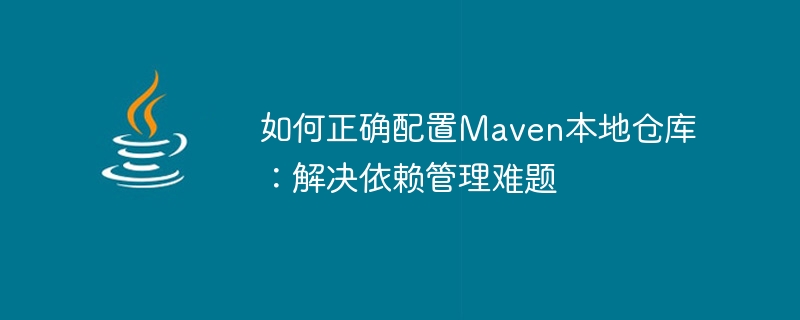

In the software development process, it is a very common practice to use the Maven tool for dependency management. By centrally managing various dependent libraries, Maven can help developers easily introduce required third-party libraries into the project and ensure that the project can be built and deployed smoothly. However, sometimes we encounter some problems, such as Maven unable to download dependencies, slow download speed, etc. At this time, we need to correctly configure the Maven local warehouse to solve these problems.
Maven will automatically download the required dependency libraries from the central warehouse when building the project, but sometimes we encounter network problems, inaccessibility of the central warehouse, etc., causing Maven to be unable to download dependencies, resulting in project build fail. At this time, configuring a local warehouse can solve this problem, because the local warehouse can save the dependency libraries we downloaded before. When Maven cannot download dependencies from the central warehouse, it can read them directly from the local warehouse.
First, we need to specify a directory on the computer as Maven's local warehouse. You can create a folder in any location as the root directory of the local repository, such asC:UsersYourUsername.m2epository.
Next, you need to modify the Maven configuration filesettings.xml, which is usually Located in theconffolder under the Maven installation directory. Find the
C:UsersYourUsername.m2epository
After the configuration is completed, you can use the Maven command to clear the cache of the local warehouse to ensure that Maven can correctly use the newly configured local warehouse:
mvn dependency:purge-local-repository
Finally, you can test whether the configuration is valid through a simple Maven project. Add a dependency in thepom.xmlfile of the project, such as:
com.google.guava guava 30.1-jre
Run themvn clean installcommand to observe whether Maven can successfully download and cache the dependency.
By correctly configuring the Maven local warehouse, we can solve some dependency management difficulties and ensure the smooth construction and deployment of the project. At the same time, the local warehouse can also improve the download speed of dependencies and save project construction time. I hope the methods described in this article can help developers better use Maven for dependency management.
The above is the detailed content of Correctly setting up the Maven local repository: solving dependency issues. For more information, please follow other related articles on the PHP Chinese website!
 What to do if you can't delete files on your computer
What to do if you can't delete files on your computer What is email
What is email How do PR subtitles appear word for word?
How do PR subtitles appear word for word? Five major components of a von Neumann computer
Five major components of a von Neumann computer OuYi Exchange app download
OuYi Exchange app download How to open php in a web page
How to open php in a web page The difference between insertbefore and before
The difference between insertbefore and before What should I do if my computer won't turn on?
What should I do if my computer won't turn on?



